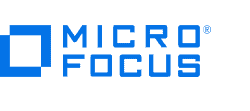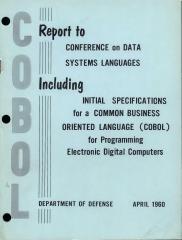
COBOL turned 60 years old in September. Remarkably, we’re now in an age where a programming language would soon be collecting social security were it human.
Even more remarkable is how strong COBOL remains. Far from entering retirement, COBOL continues to work hard, powering over 70% of global transactions, according to Micro Focus, the company that currently maintains COBOL.
The company estimates that 220 billion lines of COBOL are in use today, with 5 billion additional lines of new code added each year.

Steven J. Vaughan-Nichols writes in ZD Net that COBOL could well outlive us all. His article, well worth a read, gives a detailed history of a programming language created to fill the need for a “vendor-neutral interoperable computer language.”
He quotes Derek Britton, Micro Focus global director of product marketing, application modernization, and connectivity, who reminds us how ubiquitous COBOL is in our daily transactions:
“Any time you phone a call center, any time you transfer money, or check your account, or pay a mortgage, or renew or get an insurance quote, or when contacting a government department, or shipping a parcel, or ordering some flowers, or buying something online at a whole range of retailers, or booking a vacation, or a flight, or trading stocks, or even checking your favorite baseball team’s seasonal statistics, you are interacting with COBOL.”
The Long Run
We’ve heard predictions of COBOL’s demise since it first peaked in the 1980’s.
However, with its wide reach and deep foothold in both finance and government (industries number one and two, according to Micro Focus), massive ongoing transaction volume, and the serious work required to retire and replace it with other modern technologies, it’s unlikely COBOL will meet its end anytime soon. The only hitch: COBOL programmers are increasingly hard to find and we’re not exactly minting hordes of new ones. That may prove to be one of the bigger challenges of all.
Fortunately, the language has some advantages that help keep it strong. COBOL interfaces with most modern technologies, allowing for frontline upgrades as new technologies become available, it’s highly portable (some COBOL is even being ported to the cloud), and runs on most operating systems.
As reported by eWeek in their recent article “Six Reasons COBOL Has Survived to Age 60“, there are several advantages to COBOL that should give us some faith:
“As a modern language, COBOL supports all contemporary deployment architectures, leading edge technology and composite applications. It integrates with Java, C#, Docker containers, mobile, .NET and JVM as well as Azure and AWS cloud environments, and runs across established operating environments like Linux, mainframes, Windows and UNIX. As the use of SOA, REST and Web Services has increased, along with the range of technology elements – such as JSON, XML, WSDL, SOAP, HTML, COBOL has continued to ensure that application integration and connectivity is possible.”
For these reasons and more, it wouldn’t be surprising to see COBOL soldier on past the century mark and beyond.



